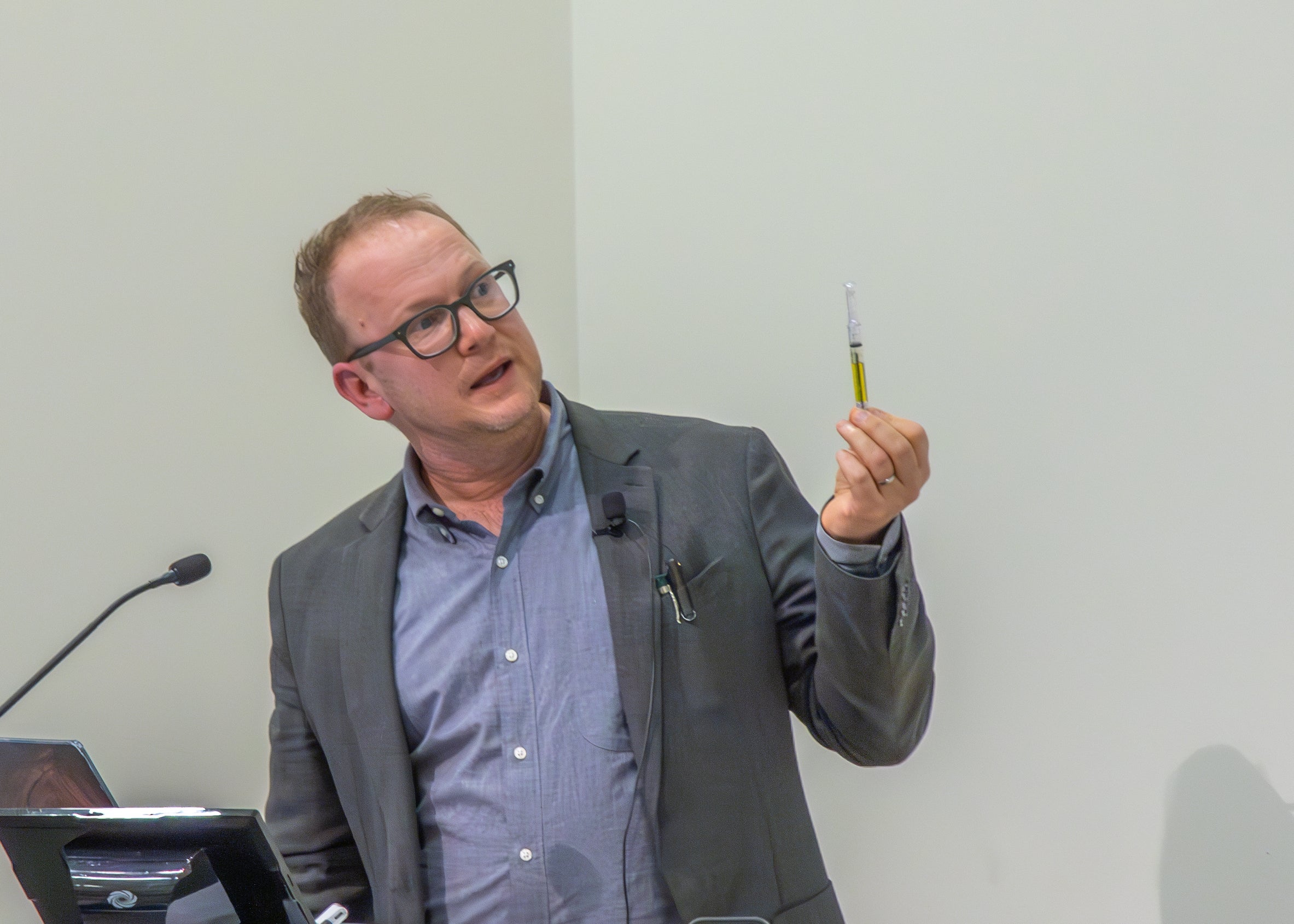Dr. Jeremy Greene Explores Healthcare Waste and Environmental Justice at Rice University
On November 21, 2024, the Medical Humanities Research Institute (MHRI) at Rice University welcomed Dr. Jeremy Greene, a physician and historian of medicine at Johns Hopkins University, for his compelling talk, “After the Single Use: Healthcare Waste and Environmental Justice.” As part of the Andrew W. Mellon Foundation-supported Sawyer Seminar Series, Reimagining Technologies of Care: Racial Health Equity and Data Justice, Dr. Greene explored the environmental and social consequences of disposable medical technologies, challenging the audience to rethink the values embedded in modern healthcare.
The Hidden Cost of Disposable Medicine
Dr. Greene began his talk by illuminating the history of healthcare’s reliance on disposable technologies—syringes, gloves, gowns, and masks—that are now ubiquitous. He explained how this "throwaway culture" emerged in the mid-20th century as a response to concerns over infection control during hepatitis and HIV epidemics. At the time, disposables were far more expensive than reusable equipment but gained traction because they reduced the labor-intensive process of sterilization and maintenance in hospitals.
This shift, however, came at a steep price, Dr. Greene pointed out. Today, medical waste has reached alarming levels, with hospitals producing up to 19 pounds of waste per patient per day, almost double the amount from just a decade ago. Greene emphasized that disposability is not inherently safer or more efficient; rather, it reflects a historical prioritization of convenience over sustainability.
Curtis Bay: The Unseen Consequences
Dr. Greene grounded his discussion in the example of Curtis Bay, a predominantly working-class community in Baltimore that processes the largest medical waste incinerator in the United States. While much of the waste originates from academic institutions and hospitals like Johns Hopkins, it is the residents of Curtis Bay—many of whom come from underserved and marginalized backgrounds—who suffer the consequences. The residents are unjustly subjected to burned plastics that release harmful toxins like dioxins, contributing to respiratory illnesses, cancers, and other health concerns.
Greene shared the inspiring story of Curtis Bay residents, who organized grassroots protests and used innovative tools like bird feeder cameras to document nocturnal emissions from the incinerator. Their advocacy resulted in local city council discussions and growing public awareness, embodying the principles of environmental justice and community resilience.
Reclaiming Sustainability in Healthcare
Dr. Greene challenged the audience to consider the false dichotomy between sustainability and safety in medicine. While single-use devices have undoubtedly saved lives, their environmental impact can no longer be ignored. He offered examples of practical solutions, such as Scotland’s National Health Service, which successfully reintroduced reusable stainless steel kidney basins—a practice that was common prior to the 1960s but fell out of use during the “disposable revolution.”
He also underscored the critical role of engineers, designers, and policymakers in reimagining medical tools and systems. Greene highlighted collaborations with faculty including Rice’s Dr. Sabia Abidi, who works to integrate sustainability and social values into medical product design. Their conversations have explored ways to teach engineers about the broader social and cultural impacts of their creations, emphasizing that the functions and implications of technologies are deeply shaped by these values. Together, they discussed the enduring importance of design thinking—an iterative approach that incorporates feedback at every stage—to ensure medical innovations are not only effective but also socially responsible and sustainable. Such partnerships, Greene argued, are essential for creating technologies that align with ethical and environmental priorities.
A Call to Awareness and Action
Dr. Greene concluded with a thought-provoking challenge: “We have, for more than half a century, inverted a value system to prioritize disposability. But the costs of this system are not evenly borne. Who benefits? Who bears the burden? And what alternatives can we imagine?” He urged healthcare professionals, engineers, and policymakers to confront the environmental impact of their choices and seek equitable, sustainable solutions that do not come at the expense of marginalized communities.
Greene’s talk served as both a warning and a call to action. By looking to the past, we can reclaim sustainable practices that were once commonplace and envision a future where healthcare prioritizes not just patient safety, but also environmental and social justice. “The tools we use are not inevitable—they are shaped by decisions, values, and the people who are included in the conversation.”
Key Takeaways:
- The rise of disposable medical tools emerged from a historical push for convenience and infection control, but it has led to unsustainable levels of medical waste.
- Communities like Curtis Bay bear the disproportionate environmental and health burdens of medical waste, highlighting the need for environmental justice.
- Sustainable alternatives, such as reusable technologies, are feasible and already being implemented in systems like Scotland’s NHS.
- Engineers, designers, and healthcare providers have a responsibility to create solutions that balance safety, sustainability, and equity.
- History reminds us that the systems we take for granted can be reshaped to create a more just and sustainable future.
Dr. Greene’s lecture invited attendees to critically reflect on the hidden consequences of modern medical practices and consider their role in driving change. By rethinking healthcare’s environmental impact and advocating for sustainability, we can work toward a system that is healthier for both people and the planet.
For more information on MHRI's "Reimagining Technologies of Care: Racial Health Equity and Data Justice" series, including upcoming lectures, visit https://mhri.rice.edu/sawyer.
photo credit: Conner Schultz

